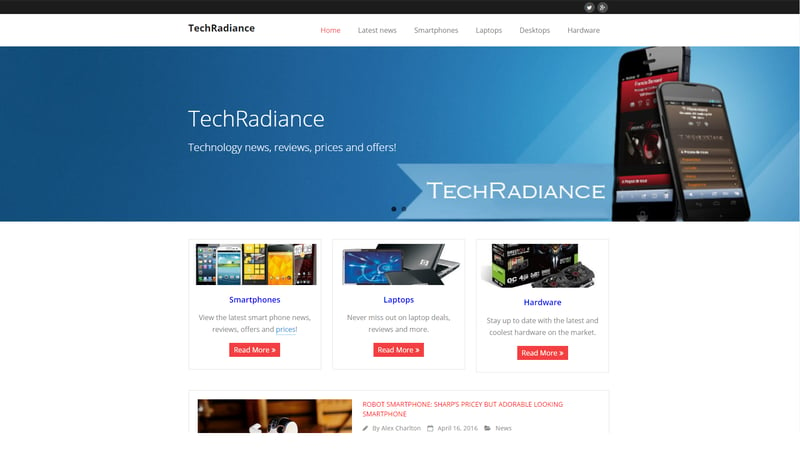Table Of Contents
Most B2B companies use a website to conduct some, if not all, of their business. With so much competition out there (not to mention buyers demanding an excellent experience), it’s imperative that your business is equipped to hold its own and stand out from the crowd.
Thankfully, there are steps you can take to turn your website into the most effective sales instrument you have. A well managed site can drive more traffic, reduce bounce rates, and result in less work for you. Once you prioritize its design and performance, you’ll be converting more visitors and increasing your profits in no time.
In this article, you’ll find three tips (plus a bonus) for how to effectively manage your website and improve your business.
Key Takeaways
- Optimizing for search engines and creating a content hub will drive people to your site and keep them there.
- Streamlining your website will create a better experience for you and your visitors.
- Optimizing for conversions will help guide visitors through the sales funnel and close more sales.
Why It’s Important to Have a Properly Managed Website
Your website isn’t simply a tool to display the products or services you provide. It represents an important customer experience with your company. A website that is properly managed should be easy to find, attractive, and simple to use.
Aside from offering a superior user experience, a well managed site will also rank better in search engines, and as a result, enjoy more organic traffic. You’re competing with plenty of other sites for attention, so yours needs to make its way to the top of the list.
Moreover, a major goal of your company website is to turn readers into repeat visitors and customers. A properly managed site will offer the right type of content and be structured in such a way that buyers are effortlessly guided through your sales funnel.
3 Tips to Ensure Your B2B Website is Managed Properly
Now that we know why a properly managed site is important, we’ll reveal three tips to help you make your site more comfortable, useful, and lucrative.
Tip 1: Optimize for Search Engines
Search Engine Optimization (SEO) will improve your search engine rankings and help drive targeted traffic to your site. Given that 71% of B2B researchers start their research with a generic search, you can bet that if your site is designed with search engines in mind, you’ll set yourself up to enjoy a much bigger piece of the organic traffic pie.
For example, LiveChat has managed to rank first for this long-tail keyword, despite being one of many similar providers:

Moreover, SEO is directly related to improving user experience and many ranking factors have user-friendliness in mind. Therefore, optimizing for search engines makes for a better experience for your customers, helping to keep them on your site once they find it.
There are so many ways you can apply SEO to your website, including targeting keywords, optimizing your code, and building links. Thankfully, there are lots of useful resources available to help you decide where to focus first, and how to develop and execute a successful SEO strategy. If you’re already seasoned in SEO, you should still aim to keep up-to-date with changes and alter your strategy accordingly.
Tip 2: Create a Content Hub
A content hub is a collection of published content—typically more than one type—that is highly relevant to your target audience. Building a content hub is an excellent way to organize all of the material you’ve created, including blog posts, videos, podcasts, and more. Think of it as a one-stop shop for all of your incredible content.
With as many as 92% of B2B buyers craving content with input from industry thought leaders, these hubs offer a remarkable opportunity. They can help drive the right traffic and engage readers with topics that interest them. Creating your own content hub can provide a digital magnet that draws qualified leads.
If you think this element could work for your website, it’s worth bearing in mind that the planning stage is key to ensure you have a hub that is both visually appealing and offers the depth and diversity your audience is looking for. There are various approaches you can take when it comes to designing and creating your hub, depending on your business and audience.
Tip 3: Streamline Your Site
It might seem like a no-brainer, but a site that is difficult to navigate will turn off visitors in a matter of seconds. Moreover, a complicated front end is likely driven by an even more complex back end. Your site needs to be streamlined as much as possible in order to create a positive experience for your customers, and keep the back end easy to manage.
The minimalist design, clear calls to action, and simple navigation menu of the example below all help to provide a clean, fuss-free user experience:

If your customers are engaging with a site that has poor navigation and unnecessary or unhelpful pages, you’re set for a higher bounce rate and a lower conversion rate. You’ll also be wasting valuable time of your own by maintaining a site that is far more complicated than it needs to be.
The key here is to keep things simple. Make sure all of the content on your website is relevant and useful by getting rid of pages that don’t add value. You can also merge content from various pages where it makes sense to do so. Once your site is stripped to the essentials, make sure it’s easy to navigate via menus and internal links.
Bonus Tip: Optimize for Conversions
The ultimate goal of your site is to help turn readers into new or repeat customers. In order to successfully convert visitors, you need to organize your website with your sales funnel in mind. From the point they discover your brand to the moment you close the deal (and beyond), there are practically endless opportunities to engage, help, and persuade the reader.
With so many options available it can be tough to know where to start. Studying your customer can be a great way to figure out how they behave when they’re on your site. You can then try to change their behavior by making tweaks such as enhancing call to action buttons and changing the layout of sales pages. You could also take on larger projects such as developing new content or implementing a live chat support system.
When deciding which changes to implement, you might want to consider A/B split testing. Also, remember that conversion optimization is not a one shot deal, and you should be looking to continuously evaluate and refine your strategies.
Conclusion
We know you care about your business and you’re passionate about your service or product. That’s why it’s so important to put the necessary time and effort into managing your company website properly. Without proper investment, you’ll be increasing your bounce rate and losing sales. No one wants that!
In this article, we’ve provided you with four tips to ensure your B2B company website is managed properly. Let’s recap them quickly:
- Optimize for search engines to get your pages ranking higher.
- Create a content hub to drive users to your site, and keep them there.
- Streamline your website for intuitive front and back end use.
- Optimize your site in as many ways as possible to increase your conversions.
Do you have any questions about how to manage your B2B company website properly? Let us know in the comments section below!
Photo Credit: geralt





